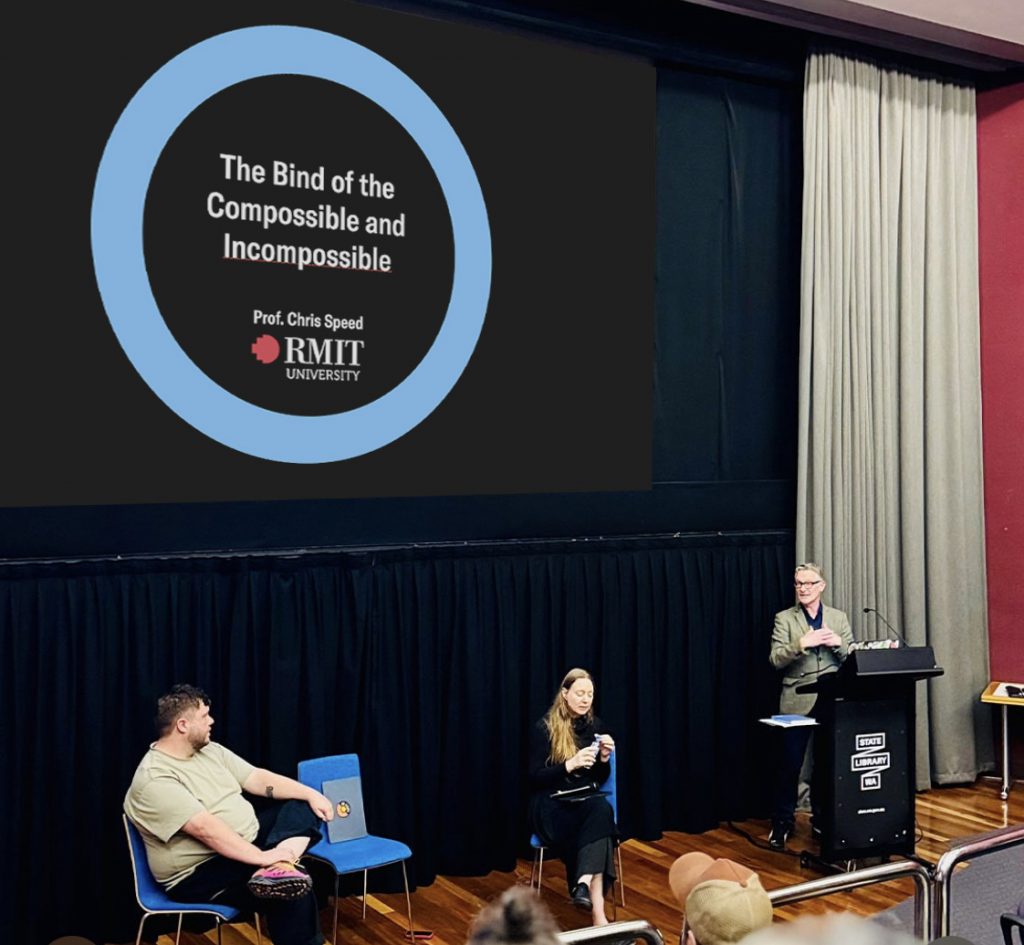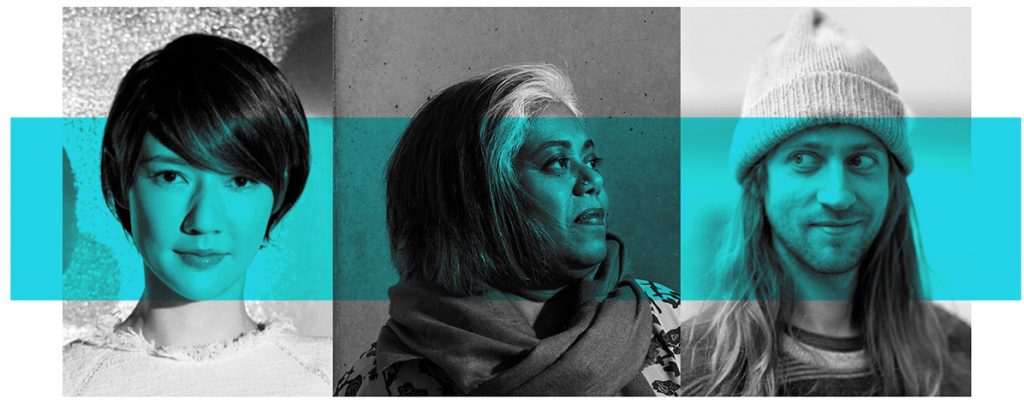Thingema and The Memory Mix
In October Jane and I worked with the National Museum of Scotland at their central Edinburgh site to explore a series of extensions to the Tales of Things project. As well as a series of story capture workshops that gathered material in support of the The Scottish Mental Health Arts & Film Festival we also developed two events that questioned the balance of material and immaterial thing’ness as it had been represented to date through the project:
- A Thingema: a cinema viewing of Scottish Film Archive material that was accompanied by some of the physical artefacts that the films were attached to, allowing people to write on to the objects whilst watching the films.
- The Memory Mix: a cinema event in which the same Scottish Film Archives were shown, but were accompanied by a soundtrack of stories of people who recalled their relationships with the artefacts, mixed live by a DJ.
Thingema
The basic premise of the Thingema was to establish a context in which the triad of components that made an artefact meaningful were brought together:
- the material instantiation of the subject matter eg. the physical sewing machine that represents Singer’s involvement in Scotland
- the immaterial films that provide meaning to the physical artefact eg. archive film Birth of a Sewing Machine (1934)
- people who interpret and potentially add further stories to each object
The event was part of BBC2’s A Reel History of Britain and we used films from the Scottish Screen Archive to look back at Scotland’s history. Films were chosen which related to objects in the Scotland: A Changing Nation gallery (level 6 Museum of Scotland). In the gallery are a variety of objects that have been tagged with QR codes. When scanned with a smartphone, these codes link to extra content on the object including archive films and photographs.

The tags also allowed viewers to attach their own story on to the object via the Talesofthings smart phone app. Visitors to the cinema were given a sheet that described the films on show, with a QR code that took them to the object in the Tales of Things database that lists all of the public stories that are associated with that ‘thing’.
Whilst the sheets became useful indexes to accompany the whole show, the most interesting dimension to the experience was taking the objects in to the show and bridging the connection between the material/immaterial and people.

The Thingema raised further questions about our relationship with particular artefacts that are gaining a greater immaterial presence beyond that of their material carcass. It seems clear that the white sewing machine in the hands of a cinema goer became a ‘symptom’ of the events that were documented on screen and through the YouTube clips online. Overwhelmed by the imagery from the 1934 film and the highly personal stories, the physical thing was rendered far less important, and instead of a thing in its own right, simply a gateway to the rich immaterial media:
YouTube copies of the original Singer ‘Birth of a Sewing Machine’ film and a personal story from Matthew acquired during one of the Tales of the Museum memory capture event. |
|
Memory Mix

The Memory Mix event on the 9th of October brought together the Scottish Film Archive pieces and the stories from visitors to the museum that we had gathered since working with them.
Tales of Things employed William Aikman as the Memory Mix DJ to mix voices over the following films that were also linked to physical objects:
Thing: St Kilda Tweed / Film: A Cruise to St Kilda (1929). Rare footage of life on the remote island of St Kilda just a year before the islanders were evacuated off the island. Full film depicts the journey from Glasgow to the island via the Western Isles. Produced by Jay’s Screen Service. Silent 7 mins
Thing: Bust of Hamish Henderson / Film: Songs of Scotland (1963). Part of a larger film of traditional songs from Scotland. This clip shows Dolina McLellan and Hamish Henderson singing “Bonnie Lassie I’ll Lie Near Ye’” in a local Edinburgh pub. Hamish Henderson was a Scottish poet and songwriter. Commissioned by Films of Scotland. 2.54 mins
Thing: Casting of a Singer Sewing Machine / Film: Birth of a Sewing Machine (1934). The manufacturing processes involved in making a Singer sewing machine at Clydebank, Glasgow. Full film is 70 minutes long and shows the entire process from castings to packaging the needles. Commissioned by the Singer Sewing Machine Co. Ltd. Silent 8.18 mins
Thing: Hillman Imp Motor Car / Film: Young in Heart (1963). Film showing the making of the Hillman Imp motorcar from conception to production at its factory in Linwood, Paisley. The film offers a colourful insight of the workings of the factory which was built to help recover jobs lost from the declining ship building industry. Commissioned by Films of Scotland and the Rootes Group. 22.39 mins
Thing: ACME Wringer/Mangle / Film: Housewives of Tomorrow (1951). A Domestic Science class as taught in a Glasgow school. Made in 1951 this film depicts very old-fashioned traditional roles for women as housewives; looking after the children, cooking and cleaning. Filmed at Albert Secondary School, Glasgow. Silent 13.33 mins
Thing: Three Columns Statuette by Roy Gussow (Award) / Film: Cumbernauld, Town for Tomorrow (1970). Film about the New Town of Cumbernauld showing the optimism surrounding it at the time. Features the Reynolds Memorial Award, which the architects won for achievements in Urban Design. Commissioned by Films of Scotland and Cumbernauld Development Corporation. 26 mins
A clip from Young in Heart (1963) promoting the Hillman Imp motor car made in Linwood, outside Paisley. Beneath it are just three of the stories that were captured on the same weekend that describe personal ‘run ins’ with the car! |
The event was attended by 59 people and the mix of spoken personal anecdotes against the historical marketing music and narratives provided a complex temporal mash up. The films were presented in full as historical artefacts, each one situated itself in time with its use of music, colour and fashion, whilst the contemporary personal memories looked back upon the past from the point of view of the present. The mix was complex because you could tell that the story teller was as old as the footage, and somehow this gave each media item an age that you could relate to.

Thanks to:
William Aikman (DJ), National Museum of Scotland, New Media Scotland, Scottish Screen Archives, Edinburgh College of Art. University of Edinburgh and RCAHMS.
Related posts

“This communication is not for you.”
Looking to connect 2 recent events / conversations (as is my want) this time to explore a fundamenta

Design Frequencies: Sharing International Practice in Design Research
Already deep into semester two here. Last semester School of Design RMIT College of Design and Socia

The Labour of the Rejected / “Walk the Plank”
Still playing catchup with so many events. A few weeks ago during hashtag#DIS2025, Mafalda Gamboa an

Design Contradictions
Two projects during Melbourne Design Week with collaborators Michael Dunbar and Liam Fennessy to exp

Paradox of Collaborative Speed
Two events in Melbourne over the past 10 days week revealed a tension across contemporary technology

Slow Materials, Slow Money: Can Design Decelerate?
Two events that I’m trying to tie together to glean some connections. The CHI panel on Regenerativ

From Food Networks to AI Governance
Back to reporting on events in Narme/Melbourne. From Food Networks to AI Governance: Reflections on

Planetary Pedagogies
Following the launch of PlanetaryCivics two weeks ago, this is the second extension to contributions

Space Debris to House Keys
Part 2 of catching up with the weeks of activity in Melbourne through February. From Space Debris to

Measuring our demise
Oh Melbourne, three parallel events that spanned the week: RMIT College of Design and Social Context